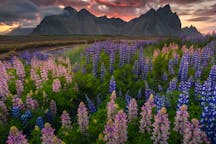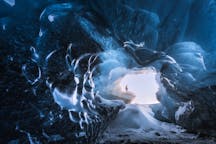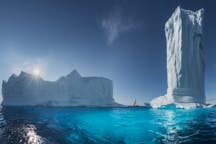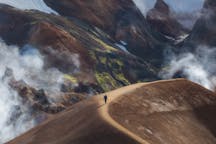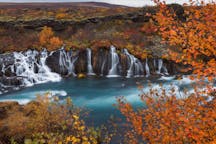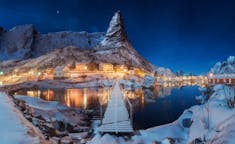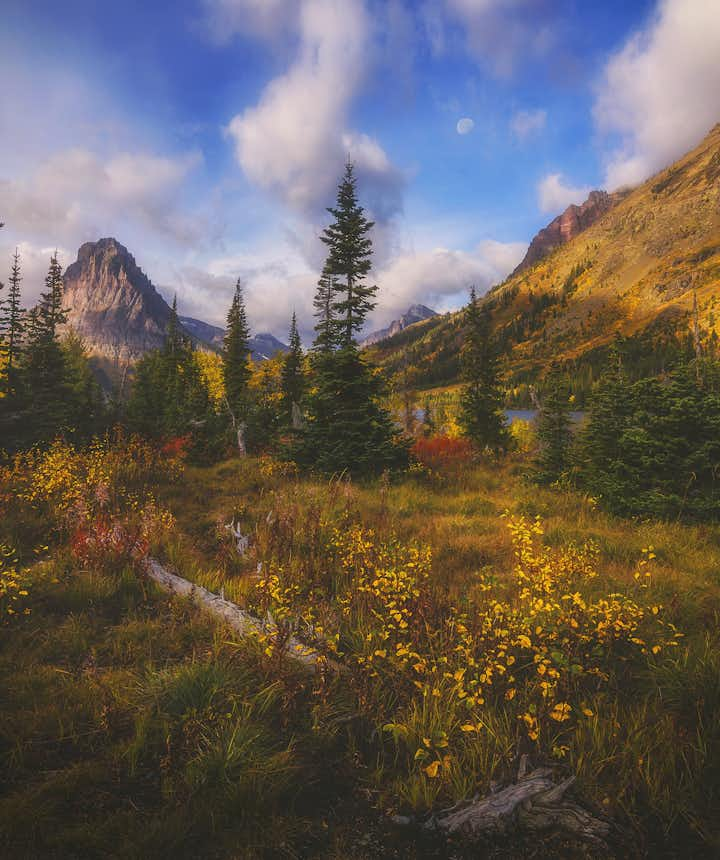
Interview with Peter Coskun

There is something to be said for thoughtful imagery. It inspires people to listen, think about and to understand the world around them. American landscape photographer, Peter Coskun, is no stranger to this sentiment. Having spent a lot of time immersed in the natural landscapes of his country, he knows all too well the impact that man has had upon the environment.
While other photographers chase the light across the different continents, Peter spends his time on his own turf, looking for intimate scenery that will hopefully inspire others to preserve nature for generations to come. This month, we had a chat with him about how he got into nature and wildlife photography, some of his most memorable trips, his experiences teaching others and how he stays motivated to keep creating.
- Check out these USA Photo Workshops
- Explore these articles on Landscape and Nature Photography
- Discover How to Become a Professional Landscape Photographer
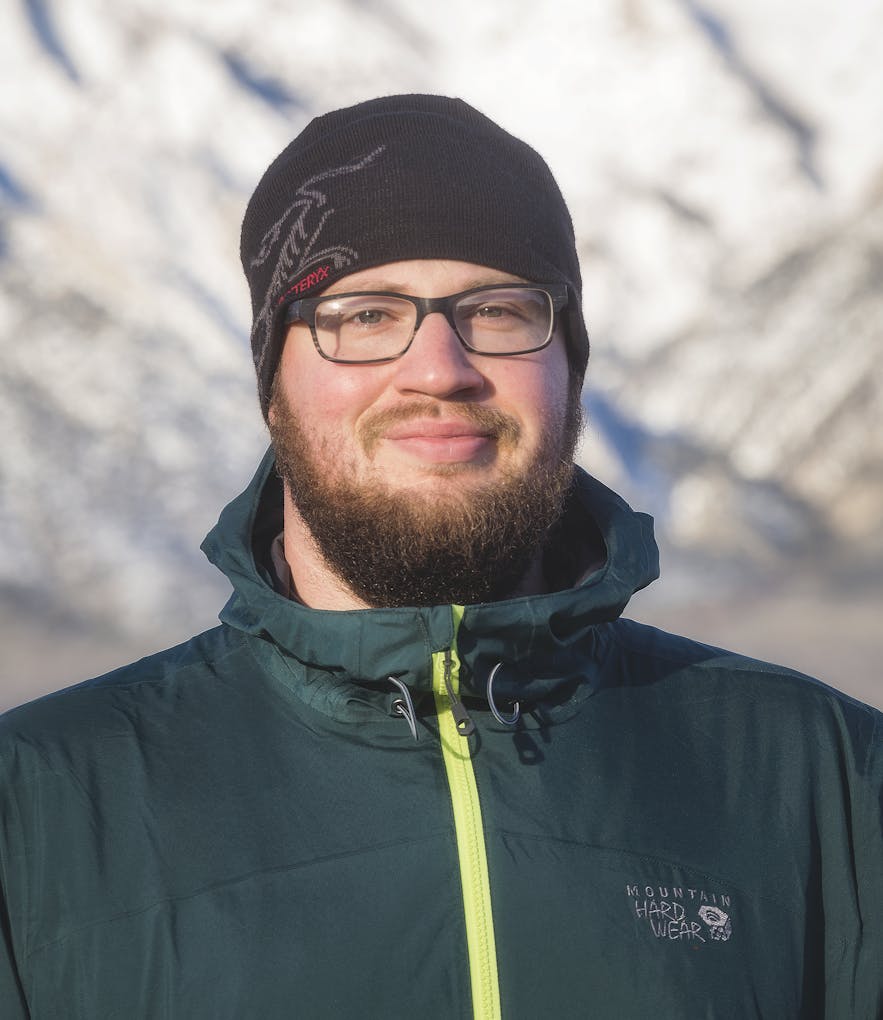 Peter Coskun has been involved in photography since he was a child. Photo by: 'Peter Coskun'.
Peter Coskun has been involved in photography since he was a child. Photo by: 'Peter Coskun'.
Hello Peter, thank you for speaking with us. You’ve spent much of your career photographing nature and wildlife. How did you first become interested in photography?
Thank you for allowing me to share some of my thoughts on photography over the years! Ever since I was a little kid in elementary school I was interested in photos I would see in books and magazines. Throughout those school years, many school projects would include sifting through old issues of National Geographic magazines to cut out scenes and paste into collages.
It wasn’t until high school that I actually had some interest in wanting to take photos of my own. I took a basic photography class my Junior year which was the last year they were using film cameras and later switching to digital. They taught the basics of camera settings, composition, light and everything one should know to get started. The problem with that was we were restricted to photographing what was on campus and only having harsh midday light to work with. It was a challenge trying to be creative, but I was having fun with the camera and learning to develop my own images in an actual darkroom.
I still have some of the projects from that class all these years later, and I laugh at what I thought I knew back then. It wasn’t until I was in college that I finally got my own camera and found myself being outside with it more so than inside. As they say, the rest was history.
- See also: Namibia Wildlife Photography Tour
What was the first trip you took for photography that really helped you develop the appreciation and passion for nature, wildlife and landscape photography?
There were really two trips for me that made me appreciate both wildlife photography and landscape photography. The first being a trip to Yellowstone National Park in 2010 when I was mostly focused on wildlife photography and still just learning.
At this particular time, I had little interest in landscape photographs and despite being in one of the most scenic parks in America, I spent very little time photographing the landscape there. This did make me appreciate the abundance of wildlife present in this area considering the vastness of the landscape. Having grown up in the city, all these wild places and vast expanses of buildingless lands were new to me.
A couple years later with a bit more knowledge and wanting to try my hand at landscape photography, I took a solo trip to California’s Eastern Sierra region. This was where I felt I truly found my passion for landscape photography. Having driven nearly 12 hours straight to where I would be staying, I had to make a choice whether to rest or head straight out to shoot sunset. I decided to check into my hotel quickly and made my way up to Mono Lake, an area that had interested me prior to leaving for this trip.
After arriving under amazing cloudy skies, I wandered and scouted compositions along the lakes edge with the unusual formations rising through the water. For a while, I thought the clouds would be too thick for the sun to break through, plus it had already gone behind the mountains. Just moments later, the sky erupted in what I still feel was the most stunning sunset I had ever seen. The light lasted for nearly an hour, and in that hour I was hooked.
The funny thing was that the rest of that trip yielded clear blue skies, so I challenged myself to shoot both grand landscapes and try some more intimate nature scenes.
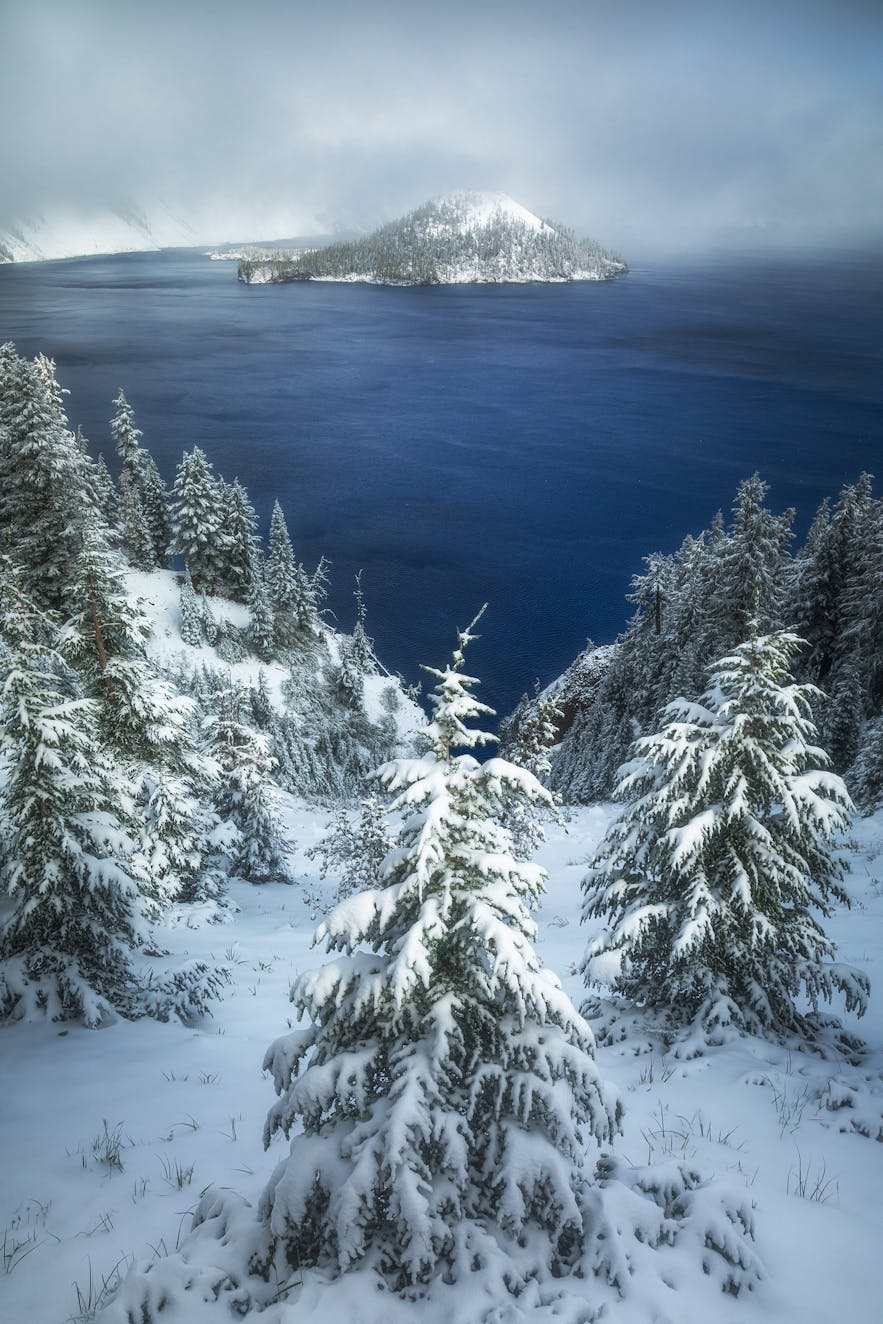 Blue Diamonds. Photo by: 'Peter Coskun'.
Blue Diamonds. Photo by: 'Peter Coskun'.
Of the many places that you have visited in North America, which did you enjoy shooting the most and why?
Probably Glacier National Park in Montana. The first time I went there in 2013 was during summer wildflowers, and it was quite amazing to be in these incredible mountains with flowers and waterfalls all over, plus being able to see a bunch of wildlife.
However, when I returned in the fall of 2016, it was about as perfect of a trip as I could have imagined. Fall colours in this impressive landscape were at peak, and the weather allowed for some truly dynamic atmospheric conditions. Aside from those conditions, the abundance of wildlife, particularly grizzly bears allowed me to get some incredible images of them at a close (and safe) distance which had been a goal of mine.
I returned again the following year during the summer, and it was a little tougher to shoot due to wildfires and smoke in and around the park, including one that sparked close to us during a lightning storm. I still managed to make some of my favourite images from that trip, but that summer was definitely a tough one to remain inspired.
- See also: Japan Photography Workshop in Autumn
Who or what inspires you to create your images in the way that you do? What is it about your approach to photography that makes it different to others?
Early on, two of the first photographers I followed were Marc Adamus and Guy Tal. Their styles were almost complete opposites, with Marc’s being incredibly dramatic and grand, while Guy’s was much more subtle. The one thing I found in both though, was that they were incredibly creative in their work. I think people may find a bit of that inspiration in some of my images, at least I hope they can see that in them.
While they are still very much my biggest inspirations, other photographers whom I have studied and followed for inspiration include Galen Rowell, David Muench, and Gary Ladd.
As far as my approach to photography goes, it has definitely changed over the years. In my earlier years, I would seem to only force myself to go photograph only if the conditions outside were going to yield a spectacular sunset and almost exclusively shot extreme wide angle scenes. In my current stage of photography, I tend to just go with the flow of things and not worry too much about overall conditions. This allows me to challenge myself creatively if conditions are lacking and perhaps find and focus on scenes that I otherwise would likely overlook in the past. I also tend to shoot much less wide angle scenes and have gravitated more to using longer focal lengths for my images.
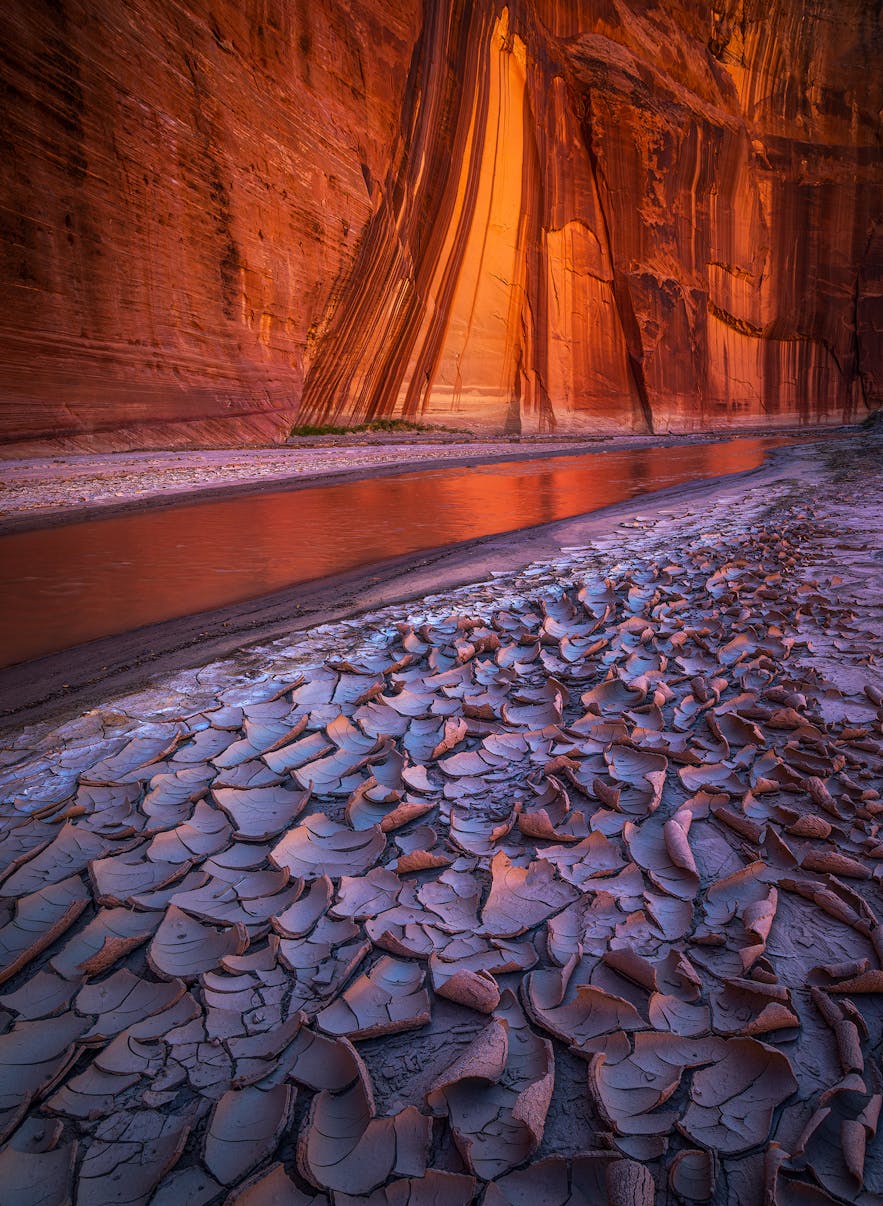 Canyon Visions. Photo by: 'Peter Coskun'.
Canyon Visions. Photo by: 'Peter Coskun'.
What kinds of changes have you seen in the environment since you first started your career?
I have seen a lot of impacts on the places I tend to explore and photograph over the years. Much of this is likely due to social media hyping up locations that can’t handle the amount of traffic they receive and lead to these places becoming battered and beaten to the point where aspects of a particular place are no longer there like moss and other vegetation. This increased visitation to these places also brings litter and vandalism, which is becoming more and more an issue. Canyon walls that were once pristine are now covered with names of couples who likely won’t be together in the future as well as even Instagram names.
Aside from over visitation of these places, a growing problem is wildfires destroying landscapes. In just the last three years, three places that are quite special to me have suffered devastating wildfires with the most recent being the wilderness behind my home here in the Superstition Mountains of Arizona. Two out of these three fires have been caused by human negligence, with the other being naturally caused by lightning.
This will seem to be an ongoing trend going forward unfortunately as weather patterns shift and bring extensive dry periods followed by heavy wet weather. This is exactly what happened here in the Superstitions this year. A very wet winter and spring caused incredible undergrowth which dried up with the lack of monsoon moisture. With the desert so dry, it was just a matter of time before it ignited and unfortunately it was a human caused fire. Once the fire was maintained, the desert got essentially a summer’s worth of rain overnight causing rockslides, mudslides, rockfalls and all sorts of damage basically wiping out one of the most scenic roads in the state.
- See also: Patagonia Hiking Photo Adventure
What is a common misconception that you feel people have about nature, or that you feel would open up their eyes to our need to be kinder to the environment?
I think that most people who don’t really explore the outdoors won’t quite understand the grasp of litter and vandalism that exists in nature. Of course, there are still very pristine places on earth, but they are the areas that are very well off the beaten path. The majority of people will explore places that are already well established, which is where much of this litter and vandalism occur.
I always want people to ask themselves, “Would this litter or vandalism enhance or detract from my outdoor experience”. The answer should always be detract and if it isn’t, then perhaps the outdoors is not a fit for them. I encourage those who are exploring outdoors to bring a small trash bag and take a few extra seconds to perhaps pick up a piece of litter they find along a trail, or report vandalism to the appropriate authorities. All of us should want to explore nature free of litter and free of vandalism (which includes carving into trees/rocks, writing on trees/rocks with markers/spray paint and anything that wasn’t a part of the landscape to begin with).
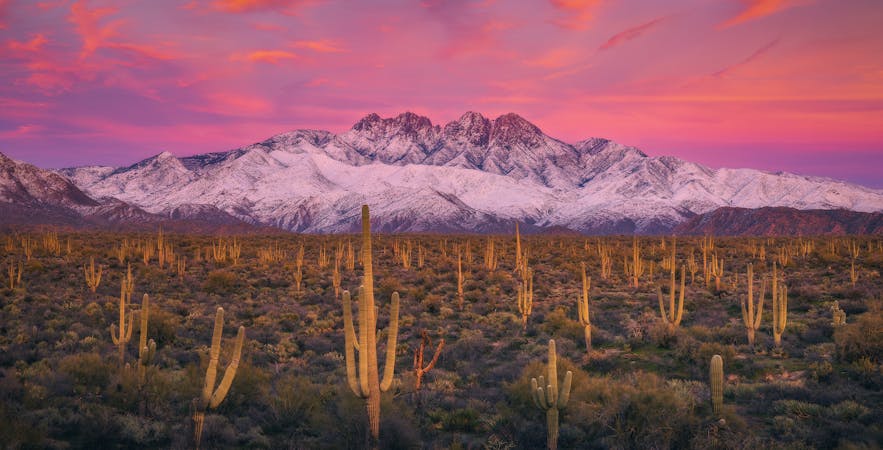 Frosted Peaks. Photo by: 'Peter Coskun'.
Frosted Peaks. Photo by: 'Peter Coskun'.
Wildlife photography can be a bit of a challenge. What techniques do you use to get the perfect image?
The biggest technique for me here is patience. Waiting for just that right moment to click the shutter and get the right pose, angle, lighting, composition. I also ask myself, does this need to be a closeup? Or should I include the landscape to enhance the scene and tell more of a story? If I am photographing the animal without much of the environment around it, then I will use a faster aperture to focus solely on the animal and allow the background to be blurred (bokeh). If I am including the landscape, then I will treat it like I am photographing the landscape and use a smaller aperture to ensure the entire scene is in focus.
When it comes to photographing animals, do you try to remain a detached observer or have you ever interacted with any of your subjects?
I try to remain detached as to not stress the animal out and change its habits. I never have and will never harass or bait wildlife to get a good photograph. I always try to keep a safe distance between myself and whatever animal I am photographing.
I have been in a handful of scenarios though where there wasn’t much I could do about the space between as an animal may cross the trail in front of you, or pop out of the brush behind you. National parks even have safe distances to keep from specific animals like elk, wolves, moose, and bears. It is important to adhere to those distances for both the safety of yourself and the safety of the animal.
Could you tell us a little about your experiences teaching photography? What have your favourite projects been?
Most of the teaching I do in regards to photography are through private workshops where I can work directly with a student to help them better their craft. I have also done a few presentations to groups like camera clubs, sharing some of my knowledge and experiences over the years.
One of the things I tend to focus on with my teaching is creativity. I try to steer people away from wanting to recreate a scene that they may have seen before and work to create something original even from the same location. My goal is always to challenge a student to create an image that makes them happy as well as have a meaningful image to share that is both visually and technically appealing.
I haven’t quite done any major projects yet in my career, but I definitely hope to be involved in a few in the coming years.
 Grand. Photo by: 'Peter Coskun'.
Grand. Photo by: 'Peter Coskun'.
What makes a good photo, in your opinion? Do you spend any time pre-visualising your images?
I think good light, subject matter, composition and creativity make for a good photo. There are many other variables that can factor into a good and great photograph as well. Unique atmospheric conditions and weather can add impact to a photograph and transform a good photograph into a great photograph.
There are a number of times where I pre-visualise a scene or an idea I want to photograph of a particular area. I do try to keep my expectations relatively low as to not disappoint myself and rather be pleasantly surprised and pleased if conditions are good or better than expected. Pre-visualising can also allow me to adapt to a scene that may not have been on my mind, but may have aspects of what I was hoping for which can often lead to even more unique imagery.
Having visited and photographed so many locations and subjects over a significant period of time, how do you keep yourself motivated?
The world is a massive place, and I haven’t even left North America let alone really photographed outside the United States. The idea that there are so many places I can and want to explore constantly keeps me motivated to create. Having said that, I still have just barely scratched the surface of the places I’ve already explored and I am often drawn to return to these locations to further my own explorations and create new and unique images.
My love for the desert southwest also constantly keeps me motivated as it is ever changing. Most people are ready to be buried in winter snow this time of year, and the low deserts are just starting to show off their fall colours. I could spend an entire lifetime just focused on the southwest landscapes, but I’d like to experience other countries and continents. There is always something new to photograph.
What effect do you hope that your photography will have on people's perceptions of the world around them?
I hope that when people view my photographs, they can appreciate what they are actually seeing. The wild places that very much exist outside of cities and the wildlife that make it their home. I want people to understand that in order to continue creating these kinds of images, that it takes the world to preserve and help take care of them for future generations. None of these places, nor the wildlife should be taken for granted.
When people look at a photo and tell me they can’t believe a place like that exists, I want them to know it does and it can always exist if we all care to preserve it.
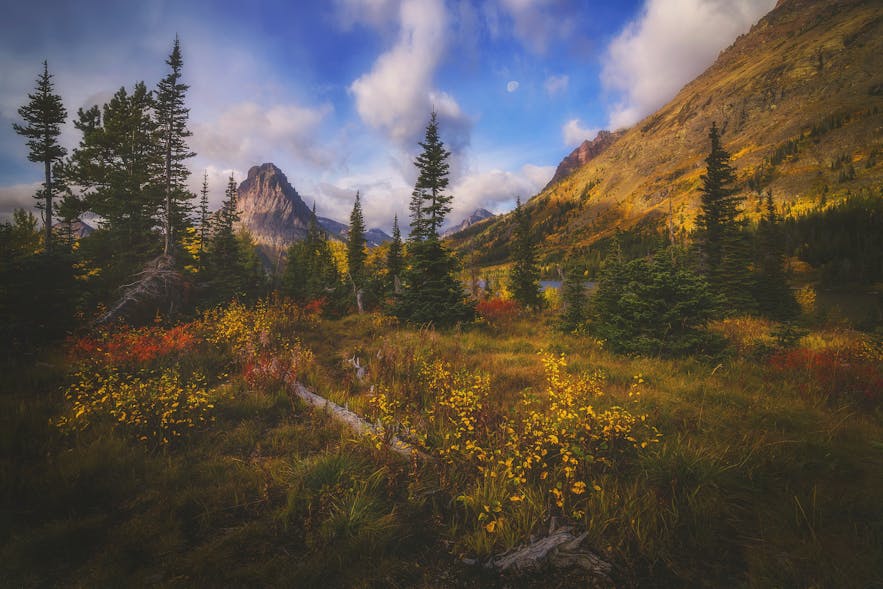 Painted Morning. Photo by: 'Peter Coskun'.
Painted Morning. Photo by: 'Peter Coskun'.
What is your advice for someone wanting to become a better than average photographer? What does it take to do this?
Constantly being out in the field creating new work while working on things like composition and understanding light will be invaluable in becoming a better photographer.
I also think both studying the work of other photographers that inspire you can be quite helpful as well as not looking to other photographers or artists at all to really create something that is your own unique image.
After all these years and all your success, what aspect of being a photographer inspires you most?
Probably the fact that there is just so much out there to photograph. I constantly have the urge to travel to new places to create. I also think the friendships and connections I have made with other photographers over the years inspires me quite a bit. The fact that a community can be so inviting and kind (for the most part) inspires me to continue on this path. It is always amazing the people I meet near and far and hearing their stories about their travels which inspires me to travel more myself.
Are there any exciting projects that we can expect from you in the coming year?
I don’t have anything major planned for next year, perhaps some group workshops throughout the year. One thing I would really like to get started on at some point is getting a physical gallery opened up, but for now that is just a pipe dream. Hopefully some more doors open up for a number of opportunities next year which a few are slowly developing, so I am looking forward to where those will take me.
For more information on Peter Coskun's work, you can visit his website or find him on Facebook and Instagram.
Learn how to capture all of the spectacular landscapes around you. Check out our range of international photo tours and photography workshops.
Other interesting articles

Interview with Claire Droppert
Thought-provoking, introspective and enchanting – these are all words that aptly describe Dutch photographer Claire Droppert's style. Her portfolio evokes a feeling of intrinsic primal instinct i...Read more
Interview with Páll Jökull Pétursson
There is nothing more inspiring than being able to do what you love, apart from loving what you do. For Icelandic landscape photographer Páll Jökull Pétursson, being able to work as a photography gu...Read more
Interview with Andrea Pozzi
There is much more than meets the eye on this magical planet that we call home and Italian photographer, Andrea Pozzi, is on a quest to discover the secrets buried underneath. This landscape photo...Read more









